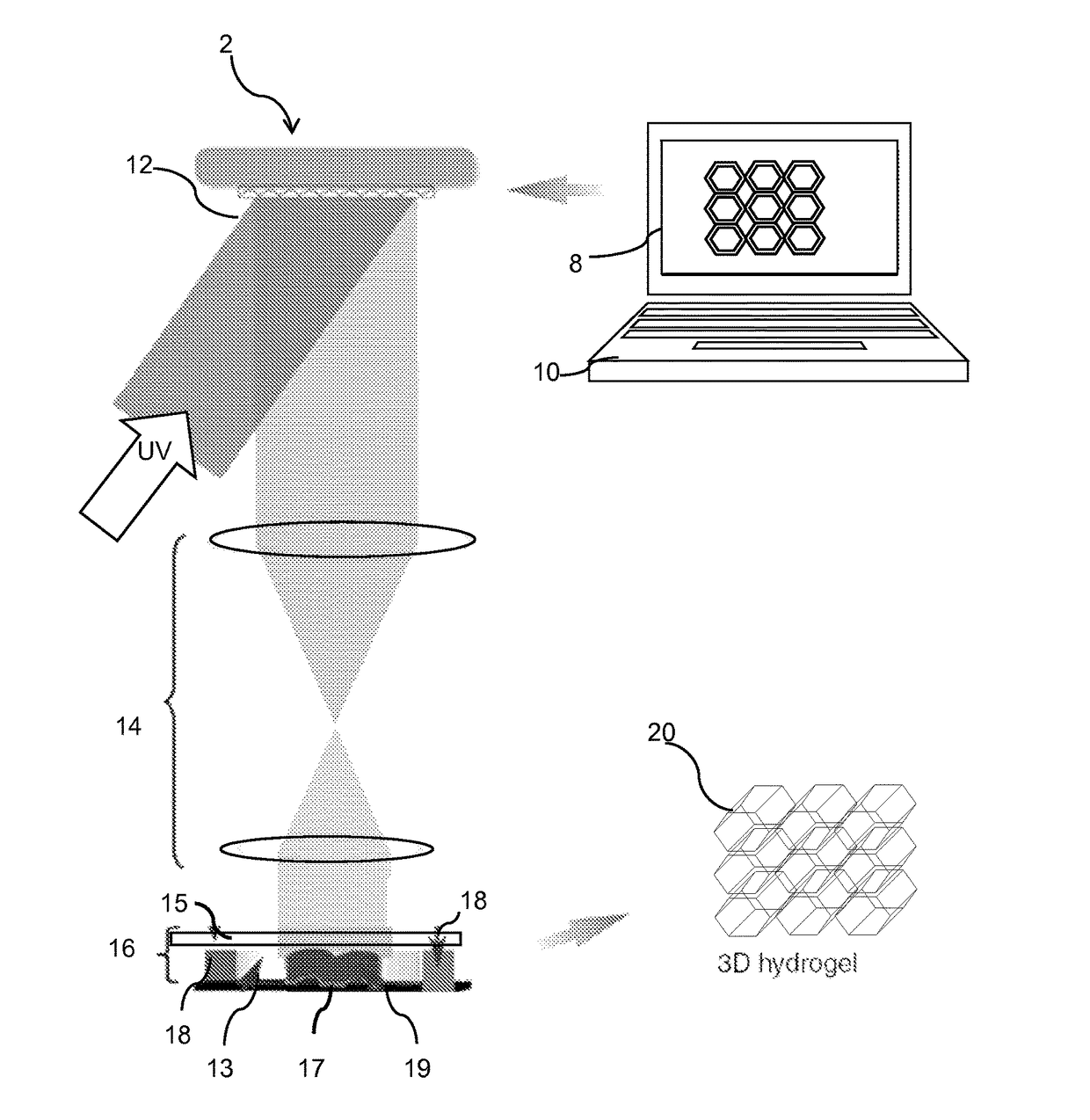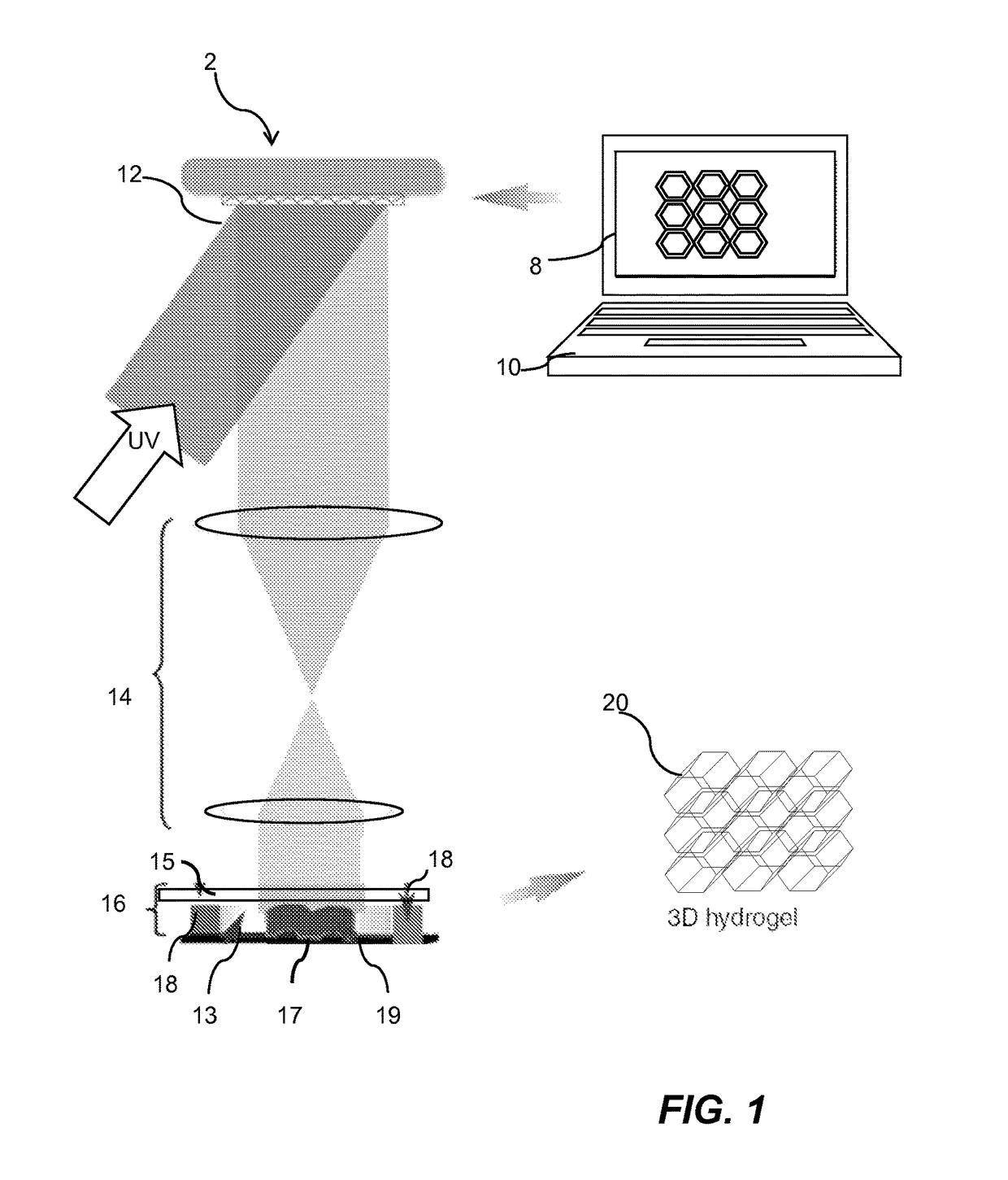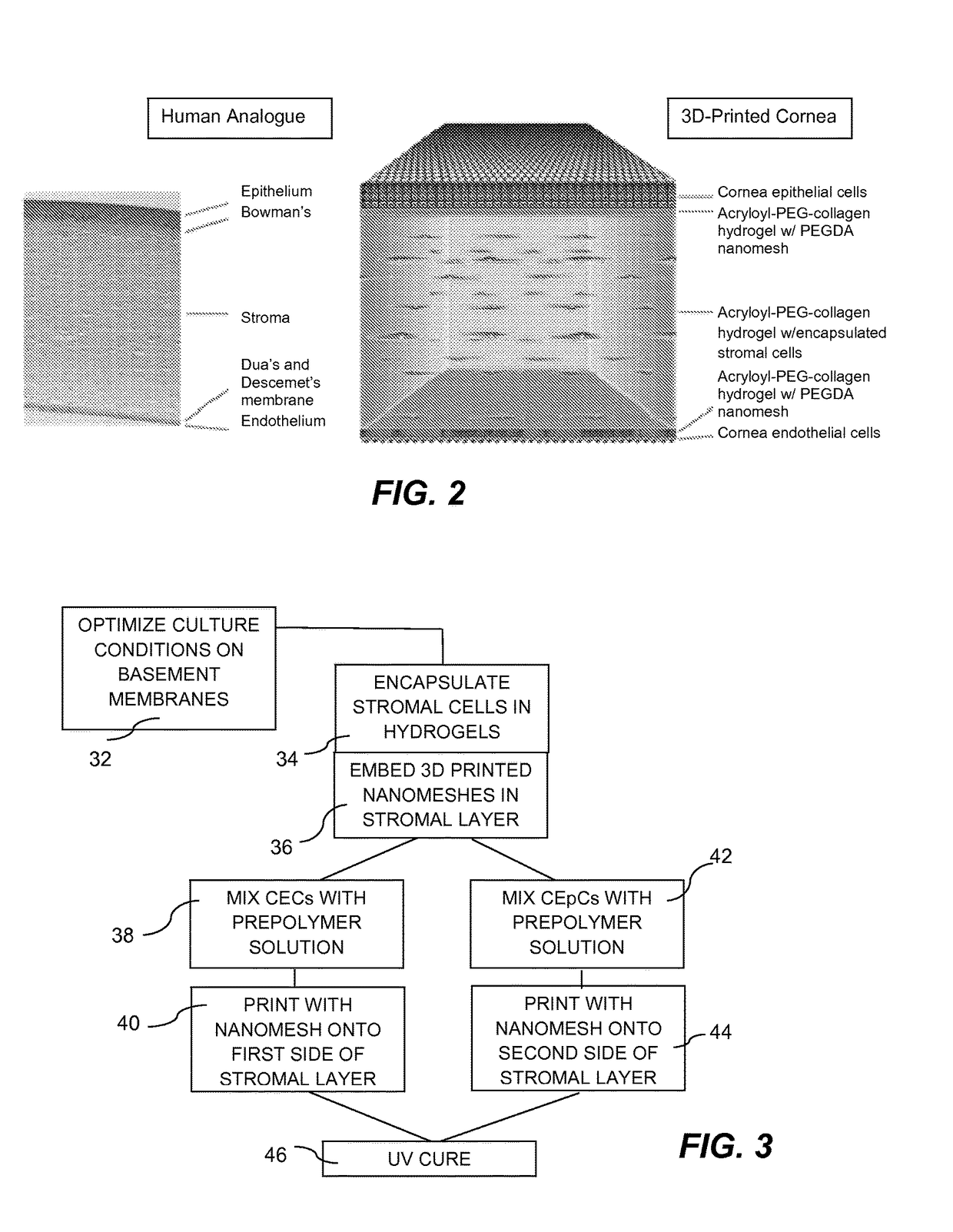Three-dimensional bioprinted artificial cornea
a bioprinting and artificial cornea technology, applied in the field of artificial cornea, can solve the problems of long wait lists, limited supply of donor tissue, and even more difficult access to donor tissue, and achieve the effect of changing the clinical landscape and restoring vision
- Summary
- Abstract
- Description
- Claims
- Application Information
AI Technical Summary
Benefits of technology
Problems solved by technology
Method used
Image
Examples
example 1
EpCs, CECs, and Stromal Cells on a Basement Membrane
[0035]Cornea epithelial cells (CECs) undergo continuous renewal from limbal stem or progenitor cells (LSCs), and deficiency in LSCs or corneal epithelium, which turns cornea into a non-transparent, keratinized skin-like epithelium, causes corneal surface disease that leads to blindness. How LSCs are maintained and differentiated into corneal epithelium in healthy individuals, and which molecular events are defective in patients have been largely unknown.
[0036]Traditionally, the LSC growth and expansion process requires mouse 3T3 feeder cells, which carry the risk of contamination from animal products, thereby rendering it unsuitable for creating clinically-viable 3D bioprinted corneas. To overcome these obstacles, an in vitro feeder-cell-free, chemically-defined cell culture system to grow LSCs from rabbit and human donors, was developed to enable generation and expansion of a homogeneous population of LSCs, and subsequent differen...
example 2
nting
[0042]The 3D bioprinting platform offers a rapid biofabrication approach for constructing cell-laden hydrogel scaffolds that 1) have complex user-defined 3D geometries composed of a naturally derived biomaterial; 2) allow for consistent 3D distribution of cells encapsulated within the hydrogel; 3) support cell viability and proliferation; and 4) feature dynamic, multi-scale mechanical cell-scaffold interactions. Importantly, these constructs enable control and integration of complex 3D geometries while providing a physiologically-relevant internal 3D distribution of encapsulated cells. Through such precise control of spatial and temporal distributions of biological factors in 3D scaffolds, we are able to evaluate the interactions of cells with extracellular matrix (ECM) proteins at the nanometer length scale, with the ultimate goal of creating advanced, clinically translatable biomimetic scaffolds.
[0043]Using 3D bioprinting, artificial corneas are fabricated using the same dime...
example 3
als for Cornea Tissues
[0045]Collagen has been used extensively as a biomaterial for corneal tissue engineering, as it comprises the main component of corneal extracellular matrix (ECM). Collagen, as a matrix constituent, has been demonstrated to support epithelial cells in forming a protective layer and to promote re-innervation by neurons. A chemically-crosslinked biosynthetic collagen matrix has shown significant promise in a phase I clinical trial. In order to modulate the degradation and mechanical properties of a collagen matrix, most studies have used chemical crosslinking approaches, which are largely incompatible with cell encapsulation. Acryloyl-PEG-collagen (Ac-Col) offers an excellent alternative for corneal tissue engineering due to its biocompatibility, optical properties, and ability for photopolymerization. Preliminary tests have been performed to assess the optical properties of a stromal cell-laden film made of GelMA, which is an Ac-Col analogue. FIG. 6 illustrates ...
PUM
 Login to View More
Login to View More Abstract
Description
Claims
Application Information
 Login to View More
Login to View More - R&D
- Intellectual Property
- Life Sciences
- Materials
- Tech Scout
- Unparalleled Data Quality
- Higher Quality Content
- 60% Fewer Hallucinations
Browse by: Latest US Patents, China's latest patents, Technical Efficacy Thesaurus, Application Domain, Technology Topic, Popular Technical Reports.
© 2025 PatSnap. All rights reserved.Legal|Privacy policy|Modern Slavery Act Transparency Statement|Sitemap|About US| Contact US: help@patsnap.com



